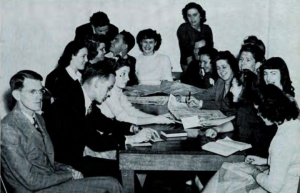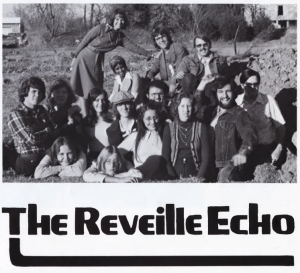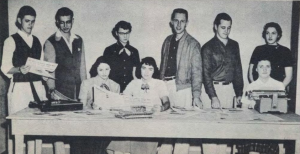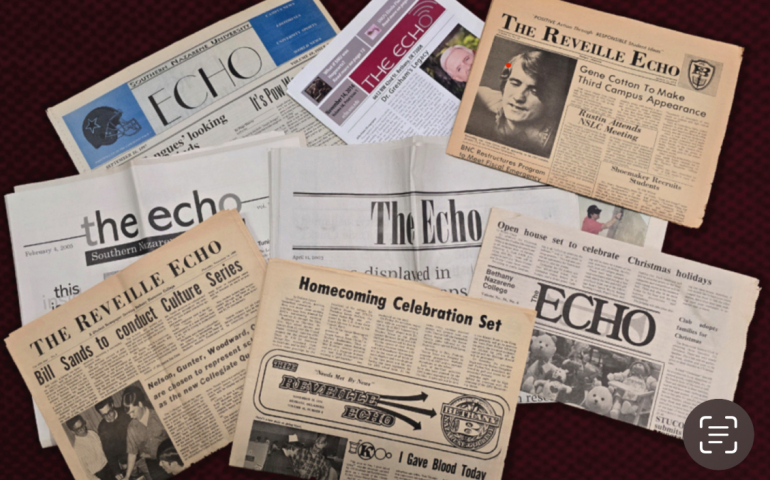Since 1928, a student-run organization at what was then Bethany Peniel College has regularly published a newspaper representing the campus community. The Echo, as it is currently known, has undergone a number of changes in its 96-year history, but its mission has remained the same. The Echo is committed to producing a first-class publication of news-related items pertaining to the campus community while providing students with real-world experiences in journalism.
For most of its history, The Echo was published under the name The Reveille Echo and was published biweekly in print. Today, it operates as a daily web-based publication with print versions published only once or twice a year. As a print publication, the paper required a larger staff to distribute the workload and at times consisted of up to 20 students. Most recently, the newspaper functions with a staff of three students and a faculty adviser. The school also has a Publications Board that serves to provide oversight and select future editors for The Echo.

I had the opportunity to interview one of the editors of The Echo from the 1940s, Forrest Ladd, Ph.D., a longtime faculty member at SNU. As a student, Ladd served as Associate Editor for the newspaper but was promoted to Editor-in-Chief when the existing editor was removed after publishing disparaging remarks about a board of trustees member.
Ladd shares that after he inherited the position, he had a meeting with the president. “I can still remember the president sitting at his desk with a ruler in his hand and slapping it against his other hand and saying, ‘I don’t expect you to kowtow, but we do expect you to cooperate.’’’ Ladd also adds that throughout his time as a student and faculty member, it has always been the expectation that the newspaper would put the school in the best light possible.
I asked Ladd about the physical process of producing the paperback in the mid-1940s. He explains that in the early days of the paper, the stories would be handwritten and then typed up by staff typists. The typed stories, along with photographs taken by staff photographers, were developed in a lab on campus and then delivered to The Messenger, which was the Warr Acres newspaper of the time. The Messenger would typeset and print the paper, and The Reveille Echo staff would pick up the printed copies and distribute them around campus.

Ladd tells an interesting story about a time when they were threatened with the possibility of not being able to publish. In the mid-forties, there were severe paper shortages, and The Messenger did not have sufficient paper to print the school’s newspaper. He recalls, “I remember the great effort of the president of the college to hunt down enough paper so that we could continue publishing. It was my fondest memory of my time as editor.”
I also interviewed Dr. Gwen Hackler who served as Assistant Editor for The Reveille Echo for the 1975-1976 school year. She remembers a large room set up in the student union building (now the fine arts building) that was only used for student publications. They had long tables set up for manually laying out the newspaper before sending it to the printer.
During her tenure on the staff, they partnered with The Bethany Tribune to do the typesetting and printing of the actual paper. Hackler reminisces, “It came back to us on sticky paper, and you would peel off the long strips, and then with an X-Acto knife you would cut up the strips to lay them out along with headings and photos on a big grid. This was then returned to The Bethany Tribune to be photographed and printed.” She further explains that if they needed to fix a typo, they would have to painstakingly cut out individual letters from a copy sheet and stick them onto the master grid sheet.

During Hackler’s time as Assistant Editor, the photography was all done in-house, and a dark room was set up for developing the photos in the basement of what is now the Don Beaver Science Building. The staff photographers were responsible for developing the film and creating prints of the images they took.
In order to save costs and to bring the newspaper up to speed in the digital world, the decision was made to publish online beginning in 2006. The paper is now published daily and can be accessed by going to echo.snu.edu on any web browser. In 2018, The Echo won the Oklahoma Collegiate Media Association award for best online publication for the state, and it continues to be a well-regarded example of student journalism.
Featured Photo by: Jim Smith
